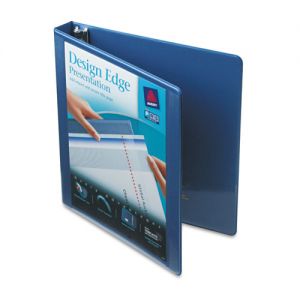A new year is upon us, and companies
around the country have visions of good fortunes in 2013. As we look
ahead towards good times, we recognize all the hard work in store for
everybody. For many, that means preparing presentations, training new
employees, and filing away 2012. Three very different tasks, but
what's one thing they have in common? If you said that they all
commonly rely on binders, well done for reading the title of this
post.
Think about that for a moment- one job
involves impressing clients, one involves making a lot of information
easily accessible and one involves indexing records that may or may
not ever be seen again. Yes, one office supply can bind them all, but
why use the same binder for several jobs when different kinds of
binders are better suited for each of these tasks?
The most basic type of binder is the
reference binder. They don't have much style (barring a few exceptions), but they are inexpensive and available in
several colors. They're perfect for internal use such as company
handbooks, procedures, job training, troubleshooting and any other
records that are frequently viewed and updated. Storage binders are
the big uglies of filing. These are designed to hold large
quantities, often using gapless or slant rings, and are built to hold
for years in a drawer or on a shelf. Some are designed to hang from filing cabinets, similar to hanging file folders. Data binders and
post binders store computer printouts, larger sheet sizes and even
more pages.
Presentations and reports have a
completely different set of criteria. Presentation binders are all
about combining affordability in large quantities with creating a
positive impression even before it's opened, which means a clear
cover to allow you to insert a title sheet and/or a spine insert.
Binders are also available in a smaller capacity such as 1/2”
rings. The tradeoff is that presentation binders are commonly built
for short-term usage, meaning they aren't suited for storage or
frequent reference.
Alternatives to traditional binders
include flexible binders made of clear plastic and easel binders that fold into easels to add an instant visual element to
your presentations. For help finding the perfect binder
for you, this binder buying guide will help sort products by size and ring type.






0 comments :
Post a Comment
Note: Only a member of this blog may post a comment.